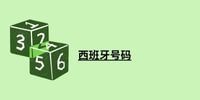Before we embark on the journey of generating leads, it’s crucial to define what a “lead” actually represents. In its simplest form, a lead is an individual or organization that has shown some level of interest in your product or service. However, not all leads are created equal. The quality of a lead is paramount, and this is where the distinction between different types of leads becomes vital:
Information Qualified Lead (IQL)
These are individuals who have shown a very basic level of interest, perhaps by downloading a general e-book, subscribing to a newsletter, or visiting a broad informational page on your website. They are at the very top of the sales funnel, curious but not yet actively seeking a solution.
Marketing Qualified Lead (MQL)
These leads have engaged more deeply with your marketing efforts, indicating a stronger level of interest. This could include shop downloading a product-specific whitepaper, attending a webinar, repeatedly visiting product pages, or interacting with a sales chatbot. MQLs are passed from marketing to sales for further nurturing.
Sales Qualified Lead (SQL): These are the golden nuggets. SQLs have been vetted by the sales team and are deemed ready for a direct sales conversation. They have a clear need, budget, authority to make a decision, and a defined timeline (BANT criteria often used here: Budget, Authority, Need, Timeline).
Understanding this progression from IQL to SQL is fundamental to designing effective lead generation strategies, ensuring challenges and considerations that resources are allocated efficiently and that sales teams are engaging with prospects who are genuinely ready to buy.
The Evolution of Lead Generation
The history of lead generation is as old as commerce itself. In the early days, it often involved direct, often intrusive methods: door-to-door sales, cold calling from phone books, and direct mail campaigns. The focus was on volume, with the hope that a small percentage would convert.
The advent of the internet marked a paradigm shift. Websites became digital storefronts, and email emerged as a new communication channel. Search engines transformed how consumers discovered products and services, leading to the rise of Search Engine Optimization (SEO) as a lead generation tactic. Content marketing gained traction as businesses realized the power of providing value upfront to attract and engage prospects.
Today, lead generation is a complex, multi-channel ecosystem, heavily reliant on data, automation, and personalization. It’s a continuous ukraine business cirectory process of attracting, nurturing, and converting prospects, driven by an understanding of the customer journey and the strategic deployment of diverse digital tools. The shift has been from an outbound-heavy, interruption-based approach to an inbound-focused, permission-based model, where businesses aim to attract customers by providing valuable content and experiences tailored to their needs.
